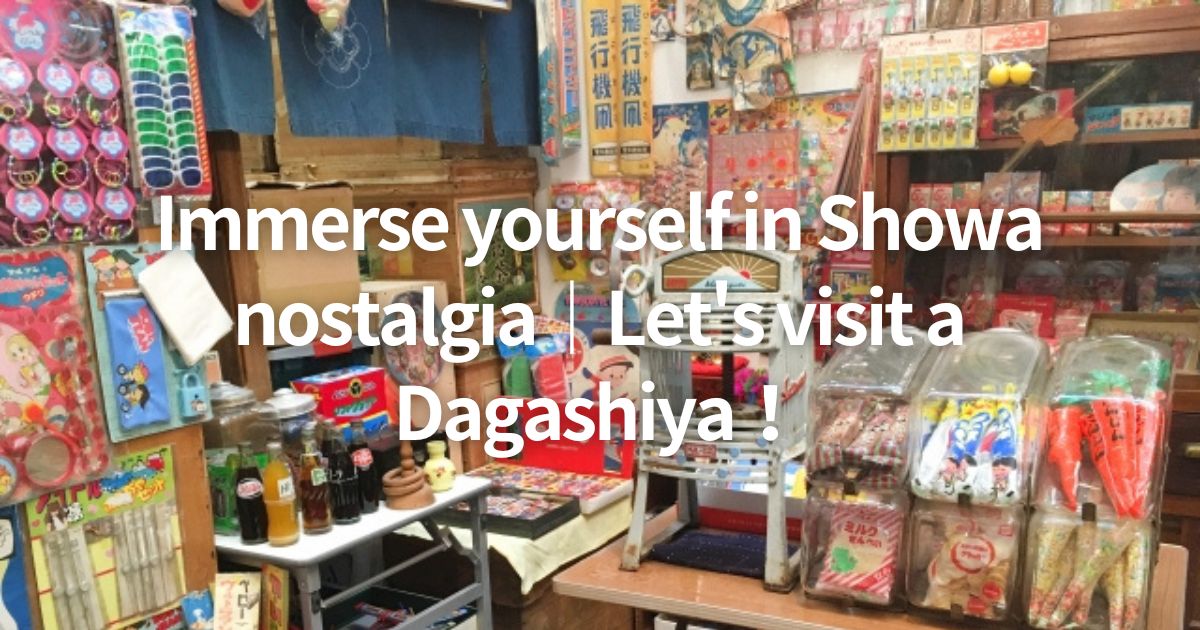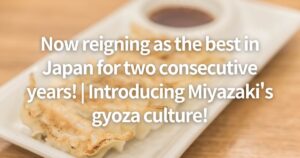Because of the wide variety of Japanese snacks, the use of natural ingredients, and strict quality control, they are highly regarded by foreign tourists as “tasty and safe.
In recent years, as part of this trend, Japanese “dagashi” have also been attracting attention.
For Japanese people, “dagashi” is a staple of what they bring as a snack on school field trips when they were small, and is one of the items that drives them to nostalgia.
In school, we were only allowed to bring special sweets on field trips, which made me feel special and happy.
In this article, we will give an overview of dagashi, its appeal points, as well as popular dagashi and ways to enjoy dagashi.
We hope you will find this information useful if you are having trouble cWe hope you will find this article helpful in selecting dagashi.
What is “dagashi” in the first place?
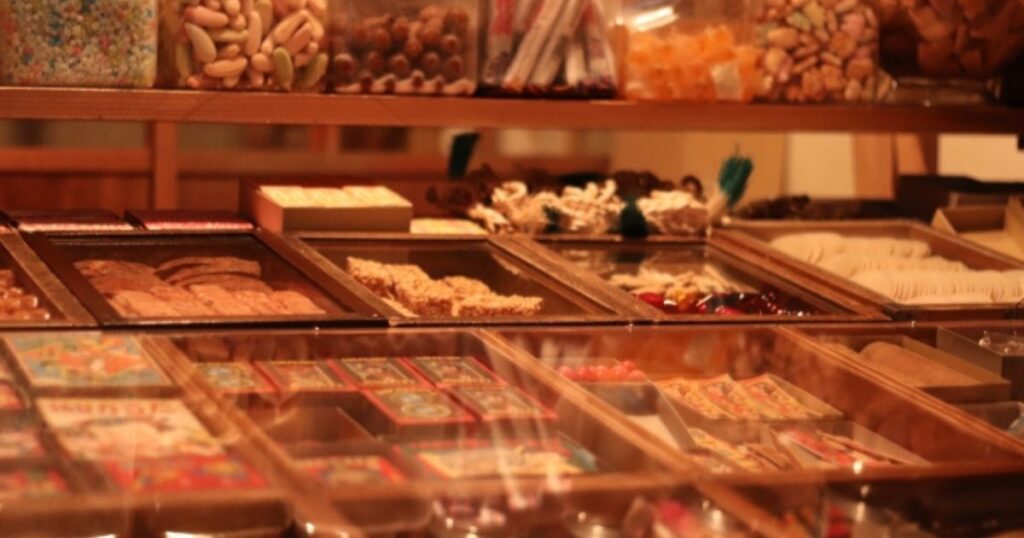

Dagashi is a traditional Japanese snack that is inexpensive and easy to enjoy.
Prices range from 10 to 100 yen, and there is a wide variety of candies, chocolates, gums, and snack foods.
They are especially popular among children because of their colorful and playful packaging.
In the Showa period (1926-1989), specialty stores called “dagashiya” were located throughout the city and were a popular place for children to relax after school.
Today, they are available at supermarkets and convenience stores, and are loved by adults for their nostalgic presence.
Origin and roots of dagashi
Dagashi was created in the Edo period (1603-1868) as “miscellaneous snacks” for the common people.
They were made with inexpensive ingredients such as brown sugar and starch, and were distinguished from the high-class “Kamigashi” confections.
After the Meiji era (1868-1912), the spread of sugar and advances in manufacturing technology led to an increase in the variety of dagashi, which spread nationwide during the Taisho and Showa eras.
In the postwar period, the number of dagashiya increased along with the baby boom, and it became a culture familiar to many people.
Even today, they are popular as they evoke nostalgic memories.
Three attractions of dagashi
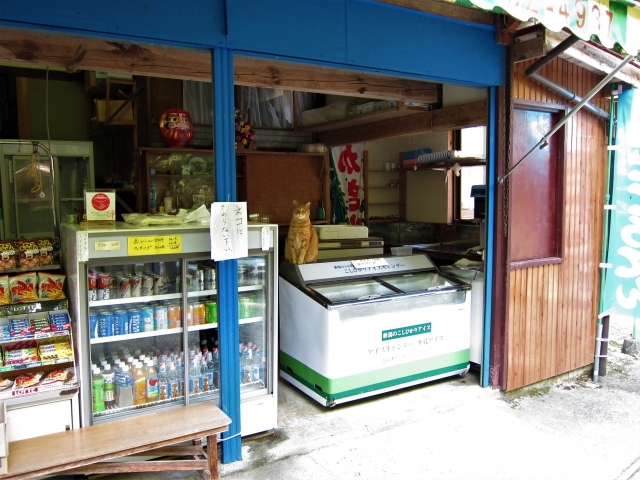

Here is a summary of some of the attractions of dagashi that I find.
Nostalgic cultural experience
Dagashi embodies the “dagashiya” culture of the Showa era and conveys the original landscape of the Japanese people.
Reasonably priced (10-100 yen), many unique character products such as “Cabbage Taro” and “Umaibo”, and the package design and playful spirit (e.g., gummy with rock-paper-scissors) evoke childhood memories.
They are popular among foreigners as “an everyday taste of Japan” and as unique souvenirs that remind them of their history and regional characteristics.
Diverse textures and creative flavors
Dagashi (candy bars) come in a wide variety of textures, such as the sizzling “Awadama,” the crunchy “Umaibo,” and the mochi-mochi Yokan (sticky rice jelly).
In addition, many flavors unique to Japan, such as tonkatsu sauce flavor and corn potage flavor, offer an adventure for the taste buds.
In particular, products that condense the essence of Japanese food, such as matcha green tea and kabayaki flavor, provide an opportunity to understand food culture.
Fusion of fun and food
Dagashi, or candy, such as Katanuki Candy (die-cutting fun) and Chiroruco Chocolate (with a short story), are characterized by their “eat and play” element.
The enjoyment of collecting characters such as Hello Kitty Choco Marshmallows and the juicy texture of Oyatsu Karpas are popular among consumers of all ages.
The appearance on social networking sites is another reason for its popularity among the younger generation.
In this way, the trinity of “cheapness,” “taste,” and “playfulness” of dagashi is appealing.
For foreign visitors to Japan, it can be recommended as an experience filled with “small discoveries” unique to Japan.
Recommendation of dagashi
Here are some of the popular dagashi bars and my recommendations.
Popular dagashi
A dagashi I would recommend
Popular dagashi
Cabbage Taro
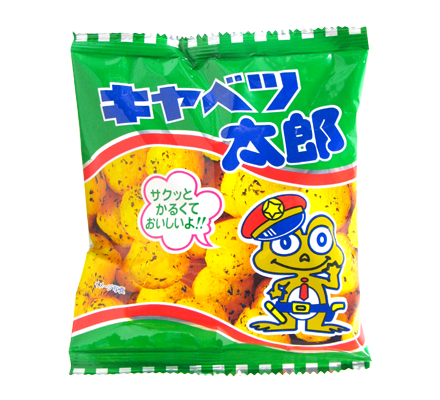

✅ Recommended Points
- A classic snack with a crunchy texture. It does not taste like cabbage, but its simple soy sauce-based flavor is addictive.
- It is a symbol of the dagashiya culture and allows Japanese people to experience “Showa nostalgia.
Black Thunder


✅ Recommended Points
- The perfect harmony of cocoa cookies and chocolate.
- Available at convenience stores, this classic product conveys “Japanese chocolate culture” to foreign tourists.
- Individually packaged, it makes an ideal souvenir.
Chirole Chocolates


✅ Recommended Points
- Attractive bite-size chocolates in a variety of flavors (green tea, strawberry, salt, etc.).
- The short stories and illustrations on the back of the package provide a “eat and play” experience, and the design is popular on social networking sites.
Tyrol Chocolates were a valuable snack that could be bought for 10 yen each at the time.
A dagashi I would recommend
Kabayakisan Taro
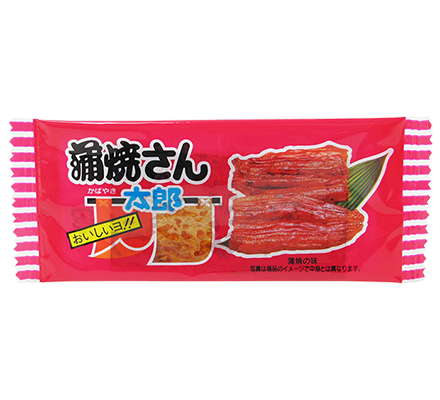

✅ Recommended Points
- A board snack made from fish surimi with a kabayaki flavor.
- The crispy texture and sweet and spicy sauce are a condensed version of “Japanese food culture.
- A hidden gem loved as a snack with alcoholic beverages.
Taratara shitenja neyo(Don’t be lazy)
Japanese reading of cod (raw material) and onomatopoeia “taratara”.


✅ Recommended Points
- A spicy snack made from codfish surimi.
- The squishy texture and spicy taste are addictive, and it is very popular as a snack at dagashi bars.
- The unique name is a great conversation starter.
Hokkaido Katanuki


✅ Recommended Points
- Red melon-flavored candy with Hokkaido motifs such as bears and Goryokaku, which can be cut out and played with.
- The finished molds can be taken home as souvenirs, making this a rare product linked to a sightseeing experience.
Popular products are the best choice for conveying “everyday Japan,” while maniac products are the best choice for conveying “local character and sense of fun.
Column: dagashi bar is quite interesting!
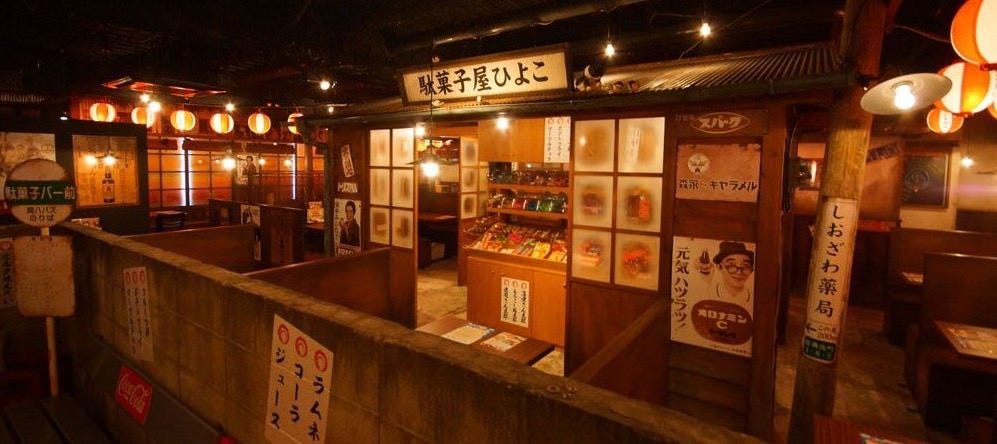

Have you ever heard of a dagashi bar?
A dagashi bar is an izakaya (Japanese-style pub) where you can enjoy drinking and eating dagashi in a retro atmosphere.
You can find dagashi that you can’t find in supermarkets or enjoy school lunch menus.
Please check it out when you are in the neighborhood!
Three ways to enjoy dagashi for foreign visitors to Japan


To enjoy izakaya to its fullest, try these tips:
✅ “Shokugan experience” played like a game
In addition to being eaten, dagashi is popular as a “shokugan” (toy food) that combines elements of fun.
For example, “Katanuki Candy” allows you to play with die-cutting, and the completed shape can be taken home as a souvenir.
The “sherbet pero” changes its taste when you put the attached powder on it, providing a surprise like a chemical experiment.
There are also events to win dagashi through shooting and fishing games, featuring participatory experiences that will engage children and adults alike.
✅ Nostalgic Cultural Tour
In a space that recreates a retro Showa-era dagashiya, 10- to 100-yen dagashi bars offer timeless charm.
Standard items such as Cabbage Taro and Umaibo serve as a medium for experiencing Japanese people’s “childhood memories.
Foreigners appreciate the vintage design of the packaging and the all-you-can-eat system at the dagashi bars as a “time travel experience.
✅ Creatively Arranged Dishes
New ways to enjoy using dagashi as an ingredient are attracting attention.
A wide range of arrangements are possible, from sweets to snacks, such as fruit sandwiches using yogurt or Pocky with cheese fondue.
In particular, combinations of snacks such as “Black Thunder x sake” and “Kaki-no-tane x craft beer” are popular among younger consumers.
The combination of dagashi and alcohol really goes well together, so the chopsticks just keep on coming.
You can easily taste dagashi at home!
You can buy Japanese dagashi on Amazon.
It is nice to be able to “buy as many adults” as you like without worrying about money like in the past.
In this article, I would like to introduce some of the dagashi available on Amazon that I recommend.
Please use them as a reference for your souvenir selection.
If you are interested, check out the following products on Amazon!




If you want to buy dagashi at the store, go to “Okashi no Machioka”!
That got me thinking, where is the best place to buy dagashi in town….
Convenience stores and supermarkets are fine, but to be honest, the variety is a little lacking.
So, I would like to recommend “Okashi no Machioka”.
Okashi no Machioka is a specialty store that has more than 150 stores mainly in central Tokyo,
It offers 1,000 varieties of today’s popular sweets at reasonable prices.

